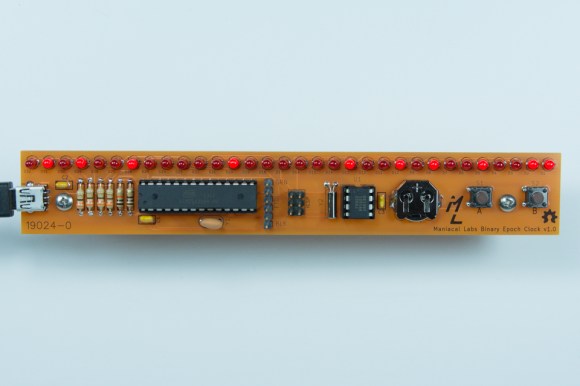Many stop lights at street intersections display a countdown of the remaining seconds before the light changes. If you’re like me, you count this time in your head and then check how in sync you are. But did you know that if the French had their way back in the 1890s when they tried to introduce decimal time, you’d be counting to a different beat? Did you know the Chinese have used decimal time for millennia? And did you know that you may have unknowingly used it already if you’ve programmed in Linux? Read on to see what decimal time is along with the answers to these questions.
unix time3 Articles
The Epoch Christmas Tree
It’s that time of the year again, and the halls are being decked with trees, the trees covered in lights, and everyone working in retail is slowly going insane from Christmas songs piped over the PA. [Dan] has a tree and a bunch of programmable LEDs, but merely pumping jollity down that strip of LEDs wouldn’t be enough. The Nerd Quotient must be raised even higher with a tree that displays a Unix timestamp.
This build was inspired by an earlier, non-tree-based build that displays Unix time on a 32 LED array. That build used an ATMega328p for toggling LEDs on and off. This time around, [Dan] is using a dedicated LED controller – the AllPixel – that just wrapped up a very successful Kickstarter campaign. The AllPixel is, in turn, controlled by a Raspberry Pi running the BiblioPixel library,
The tree displays the current time stamp in binary across 32 spaces, with green representing a ‘one’ and a red representing ‘zero’. The top of the tree is the least significant bit, but in case [Dan] gets tired of the bottom of the tree staying completely still for the rest of this holiday season, he can switch the order making the base of the tree the LSB.
Video below.
Unreadable Binary Epoch Clock Is Unreadable

What time is it? For that matter, what is the date? This clock can tell you both of those things, if only you could read it. The inspiration for this Binary Epoch kit came after a friend of [Maniaclal Labs] built an eight-bit binary clock. That’s a pretty common project that gets riffed on for things like mains-timed logic-driven clocks. They figured why not make it bigger? But even then you can make some sense out of the display after studying it for just a bit, you won’t be much closer to answering those two questions.
The problem is that this is unreadable in a couple of different ways. First off, how long did it take you to figure out in your head the decimal equivalent of the binary number displayed above? We gave up. But pounding the number into Google (search for: 0b01010010000010000001001010010011 in decimal) gives us 1376260755. meaningful? Again, not to a human. This is Unix time, which is the number of seconds elapsed since the Epoch: 8/11/13-22:39:15.
Check out the video below that shows how to set the clock, which uses a menu system for human-friendly input. But since it’s Arduino compatible you can also connect an FTDI cable and program it from a computer. Oh, and since this is Open Source Hardware (note the icon in the lower right) you can get all the info to build (or breadboard) your own from their Github repo.
Here’s another complicated clock that uses Nixie tubes to display time and date info which is actually of use.
Continue reading “Unreadable Binary Epoch Clock Is Unreadable”













